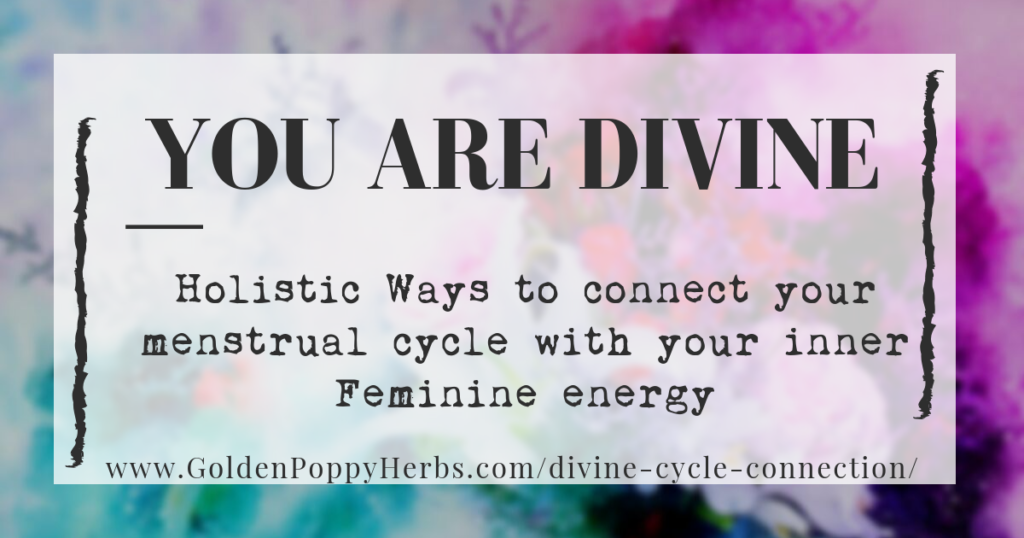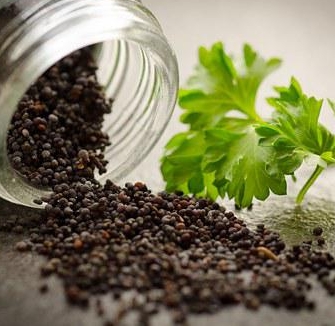
“Every woman’s uterus needs attention, love, and gratitude.
When we are one with the womb, we are one with the Goddess.”
– Dr. Rosita Argivo, The Argivo Institute
We believe that inside every person exists something that is a little bit wild. Inside each of us is a burning fire, perhaps we would even say, a little bit of a rebel. This energy serves as our inner guide, our sense of intuition. It is the space from where we can draw power and from where we rise. We all can have the ability to connect to this space, and it is comforting to know that our internal feminine guide, or the energy known as yin, is within us. Through the practice of building awareness of this energy, we can seek balance in the process of tapping into the natural, often cyclical, rhythms of nature.
It is possible we are feeling this feminine, or yin, energy more than normal. Perhaps this is because we collectively understand the importance of connecting to our feminine power, and seeking balance, is crucial right now more than ever. Perhaps we hear the whispering of our ancestors before us in our ear reminding us of how far we have come, but that we still have so far to rise.
Some of our greatest strength comes from fostering a relationship with ourselves by seeking to better understand what is happening inside of our bodies.
Tapping into the rhythms of life – rhythms such as the phases of the moon, the change of seasons, and the menstrual cycle – can help you to connect to your deeper intuition.

We would like to take a moment to acknowledge that not all people who menstruate see themselves as female, and that not all people who see themselves as female menstruate. In either of these cases (and any others we may have missed), we invite you to tap into the knowledge offered below as a way to connect to the feminine, or yin, the energy that lies within all beings, as well as a way to honor the cyclical nature of life in general.
While we are beginning to see a significant change from the ways of the past, it should not be forgotten that for centuries the process of menstruation has been shrouded in shame, and this may be difficult to shrug off. The effects of this still linger in many people today. If this is something you are struggling with, know you are not alone, and that making a personal connection to your cycle can be the first step in your journey, and we hope that this post can serve as a guide. To initiate this process, let’s start with a little bit of a biology lesson.
“Menstrual empowerment is the last uncovered frontier in personal growth and spirituality today” – DeAnna L’am, world recognized expert in Menstruation Empowerment and author of A Diva’s Guide to Getting your Period
What Happens in Our Body During Menstruation
Scientifically speaking, as defined by the U.S. Department of Health and Human Services Office on Women’s Health, the menstrual cycle is the monthly hormonal cycle a female’s body goes through to prepare for pregnancy. During your cycle, which consists of a typical 28-day time frame between when your period occurs, until the first day of your next period, you will experience your hormone levels (estrogen and progesterone) changing throughout the duration of your menstrual cycle, which causes all of the well known menstrual symptoms.
Menstruation itself, or better known as our “period,” is what we know of as the action of bleeding that occurs monthly. As explained by the OWH, the bleeding is a result of the uterus lining build[ing] up to prepare for pregnancy. If you do not get pregnant, estrogen and progesterone hormone levels begin falling. It is this action of falling hormone levels that serve as a trigger to the body to begin the process of menstruation, at which point the body begins to dispel the build-up that occurred on the uterine wall.
The body experiences distinct changes each month during the different phases of the menstrual cycle. Understanding what is occurring within the body during the cycle can help us to better connect to our own personal rhythms.
There are four distinct phases that take place during the menstrual cycle:
- The Menstrual Phase – This is the phase we are likely most familiar with, as it is the phase associated with actual menstruation. This phase lasts anywhere from 3 – 7 days.
- The Follicular Phase – This is the phase that can be thought of as the beginning of our menstrual cycle. It is during this phase that the body is preparing for the possibility of pregnancy. Estrogen hormones signal the uterine wall to begin thickening in preparation for the attachment of a fertilized egg and the subsequent development of a fetus.
- The Ovulation Phase – This is the phase in which the process of releasing an egg occurs. The uterine wall continues to thicken as the fallopian tube releases the egg, where it then travels into the uterus. This process usually occurs about 11-16 days before the initiation of your period.
- The Luteal Phase – This is the phase following ovulation. During this phase, progesterone increases and begins to stimulate the uterine wall to prepare for pregnancy. If pregnancy does not occur, the uterus will shed this lining, and menstruation occurs.
Honoring your cycle
Now that you have [more of] an understanding of what occurs biologically in the body during our menstrual cycle, we want to present you with five ways that you can better find a sense of connection to your menstrual cycle, and honor the feminine, or yin, energy that manifests during this time of the month.

Celebrate your cycle. This tip has been placed as [the] number one intentionally, as the ability to honor your cycle requires a mindset shift. For many of us, it will require a process of unlearning past thought patterns around our cycle; it is possible that we have been made to believe that menstruation is unclean, or should not be talked about, or is shameful. Choose to instead see your cycle as sacred. Every month our body experiences a process of letting go of what no longer serves us, and gives us an opportunity for renewal. Celebrate this fact, and allow yourself to fully embrace this energy. If you do not menstruate, this celebration and letting go of what no longer serves us can be done around the new moon each month, or during the fall season.
Honor your energy levels. As we discussed earlier, your body goes through four different phases during your menstrual cycle. Depending on which hormone is dominant, you may have different levels of energy. Become aware of these changes, and listen to your body. Here are some recommendations from menstrual cycle awareness activist, Crystal Kennings (you can check her out by on Instagram @crystalkennings) on ways to sync your exercise routine or workouts to your cycle phases.
- The Follicular Phase: As our cycle begins, we experience a rise in energy. This can be thought of a lot like the moon cycle – as the New Moon builds into the Full Moon, so does energy, until the point of release of the Full Moon. Our bodies work in a similar way. During this phase, embrace the extra energy you have. You can increase the intensity in workouts, or perhaps try that new spin class you have been pondering!
- The Ovulation Phase: This phase is where we experience peak energy levels. At this point it is likely you feel quite powerful and strong. Harness this energy and perhaps try to hit a new weightlifting PR!
- The Luteal Phase: It is at this time that our energy levels begin to decline as the body begins to prepare for the menstruation that is soon to come. Workout recommendations during this time include such things as lower intensity full body workouts with lighter weight, and guiding your body into easier exercise as your menstruation approaches.
- The Menstrual Phase: During this time, our bodies are doing a lot of work and are fully in the process of menstruation. The energy of this phase asks us to draw inward and to be present. Your body is likely experiencing low energy during this time, so it is recommended that you honor this by allowing your body to rest, or perhaps practice easier exercise such as a gentle or restorative yoga flow.
Regardless of these recommendations however, no one can know your body as well as you do. Check in throughout your cycle and evaluate your energy levels frequently (perhaps even journal them to build more awareness of how your body changes!). Always try to be cognizant of your energy, and honor your body if it calls for rest.
Nourish your body throughout your cycle. To accommodate the changing energy levels throughout your cycle, we can honor and connect to our cycle by properly nourishing our bodies during each phase. Nutritionist, herbalist, and women’s wellness educator, Kristin Dahl, provides a very in-depth post further explaining this concept, which can be found here. Here are a few of her recommendations:
- The Follicular Phase: Nourishment recommendations for this phase includes probiotic-rich foods (i.e. fermented foods such as sauerkraut and kimchi), and foods high in fiber.
- The Ovulation Phase: Nourishment recommendations for this phase include foods the support liver-cleansing and foods that are anti-inflammatory including fruits, vegetables, sprouted nuts, and probiotic-rich foods.
- The Luteal Phase: Nourishment recommendations for this phase include foods that support serotonin production, such as dark, leafy greens, healthy fats such as avocado, and warm, grounding foods as you move closer to menstruation.
- The Menstrual Phase: Nourishment recommendations for this phase include foods that are rich in iron and vitamin C. Keep in mind that keeping iron levels high during this time is important, as we lose a lot of iron through the bleeding process. This includes foods like dark, leafy greens, beets, broccoli, sweet potato, seaweed, and berries.
Perform a ritual. This refers back to the first tip and embraces the mindset of making your cycle sacred. The act of menstruation is symbolic of letting go. Take the time each month to embrace this energy. Perhaps allow yourself the simple act of writing down everything you want to let go of that no longer serves you, and meditating on this. Allow yourself to sit with this, perhaps even grieve, but then allow yourself to detach from what is holding you down. Your ritual could also come in the form of allowing yourself a couple hours of solitude, quiet, and rest during your heaviest flow day. Express gratitude for this process and the energy you are experiencing. Whatever you choose to do as your ritual, make it sacred, and personal, to you.
Connect with your sisterhood. I cannot think of a better way to celebrate and honor the feminine energy that comes with menstruation than to tap into the sisterhood you have around you. Connect to the fellow females in your life that have helped shape who you are today. During Biblical times, it was common for women to retreat to the “Red Tent” during times of menstruation. While some historians think that may have been done because at this time women were often seen as “unclean,” and were expected to be out of the public eye during menstruation, but it may have been so that women could have the space to be freed of their “duties” (i.e. cooking, cleaning, and acts of servitude). In modern times, many women share time in the Red Tent to bond and fully embrace feminine energy. If there isn’t a Red Tent group near you, you can Honor this bonding connection by perhaps asking your fellow women to tea, or sending them a quick text to tell them how much you appreciate them in your life.
Connecting to your Divine Feminine Energy Using Herbs

What does it mean to connect to your Feminine or Yin Energy? Why is it important?
The world we live in continually seeks to find balance. Just as there is light, there is darkness. Along with this concept, there is the balance of the masculine, or Yang, and the feminine, or Yin, in consciousness. One can think of Feminine/Yin Energy as the aspect of self that is receptive – it is connected to the parts within us that are caring, creative, sensual, and guiding. However, the most important aspects of Feminine/Yin Energy, as explained by author Suzanne Kingsbury, is that this energy “represents the connection to the part of your consciousness responsible for nurture, intuition and empathy.”
Having awareness of this energy can provide us with something to connect strongly to during our menstrual cycles. It is this very energy that we embrace and celebrate each month, and by honoring the Feminine/Yin within all of us, we not only celebrate the innermost essence of our Self, but seek to bring balance in the world we currently exist in.
Along with the aforementioned ways we can connect with our cycle, one can tap into our Feminine/Yin Energy through the use of herbs to ease suffering that may occur during menstruation.
While yes, the cycle and process of menstruation is sacred and to be honored, we also must recognize that this sometimes comes with pain. Cramping or aching during menstruation can be difficult, but there are some herbs that can be used to help ease this pain. Opting for natural, herbal solutions versus over-the-counter painkillers is not only more gentle for your body, but also helps connect us back to the natural rhythms of nature.
- Herbs such as chamomile or lavender can be used to help bring a sense of calm to your system if feelings over overwhelm or anxiety accompany your cycle. These can be utilized if you are having difficulty finding a sense of grounding, or if you would like to be aided in rest.
- Crampbark can be used to help ease pain from cramping; it is an antispasmodic herb that is specific to smooth muscle tissue such as that of the uterus. Other warming herbs such as Ginger can also be helpful in bringing warmth to a stagnated and painful pelvic area.
- Turmeric is also an excellent herb to consider helping reduce any pain and inflammation.
- Red Raspberry leaf is often thought of as the penultimate uterine herb. It is well known as a uterine tonic, said to help ‘tone’ the muscles of the uterus so they function better. Additionally, it brings the actions of all other herbs taken in conjunction with it to the uterus, thus bringing the actions and energies of the other herbs directly to the place in the body where they are needed.
At Golden Poppy Apothecary, we offer a Cramp Ease formula that is a wonderful place to start when looking for herbs for relief from menstrual pain; however, each person is unique and different scenarios may need different herbs. Additionally, our Female Tonic Tea is wonderful for nourishing the reproductive system. For more specific help in working with menstrual issues please consider scheduling a consultation with one of our practitioners.
We hope you find these tips and tools useful, and wish you well in your journey. Each cycle presents a new opportunity for renewal and rebirth, and a new opportunity to detach from what no longer serves us. The most important thing to remember is that much like anything else, your journey is yours and yours alone, and connecting with your cycle is no different. It is important to find the methods of connection that work best for you, and bring you the greatest sense of Self.
*The information within this article is not a substitute for medical advice. It does not seek to diagnose, treat, or cure any disease or condition. It is for informational purposes only. Please always seek help from a licensed medical professional for your health issues.*
Shayle Sabo is a budding herbalist and professional freelance writer specializing in holistic health and wellness. Shayle can be found at http://www.shaylesabo.com
Sources:
- Alexander, Bianca. “6 Ways to Celebrate Your Cycle.” Spirituality & Health. 27 March 2015. https://spiritualityhealth.com/blogs/conscious-living/2015/03/27/bianca-alexander-6-ways-celebrate-your-cycle
- Always. “Your Menstrual Cycle Phases.” Tips & Advice. 2019. https://always.com/en-us/tips-and-advice/your-first-period/your-menstrual-cycle-phases
- Dahl, Kristin. “Nourishing Your Cycle with Seeds, Herbs and Diet.” The Local Rose by Shiva Rose. 9 May 2019. http://www.thelocalrose.com/nourish/nourishing-your-cycle/
- Essertier, Dylan. “What Does Divine Feminine Mean? It’s So Much More than a New Age Buzzword.” Bustle. 25 October 2017. https://www.bustle.com/p/what-does-the-divine-feminine-mean-its-so-much-more-than-a-new-age-buzzword-2966641
- USDHHS Office on Women’s Health. “Your Menstrual Cycle.” Menstrual Cycle. 16 March 2018. https://www.womenshealth.gov/menstrual-cycle/your-menstrual-cycle
Browse by category
- Aromatherapy
- Astrology & Magic
- Ayurdeva
- Botany Foraging & Gardening
- Chakras
- Digestion
- Earth Connection
- Energetics
- Flower & Gem Essences
- Folk Traditions
- Herbalism & Holistic Health
- Immune Support
- Materia Medica
- Mushrooms
- Nutrition
- Seasonal Living: Autumn
- Seasonal Living: Moon
- Seasonal Living: Spring
- Seasonal Living: Summer
- Seasonal Living: Winter
- Skin & Body Care

Don’t Miss a Thing!
Enter your email below to be the first to know about sales, new products and tips for taking care of your pieces.

